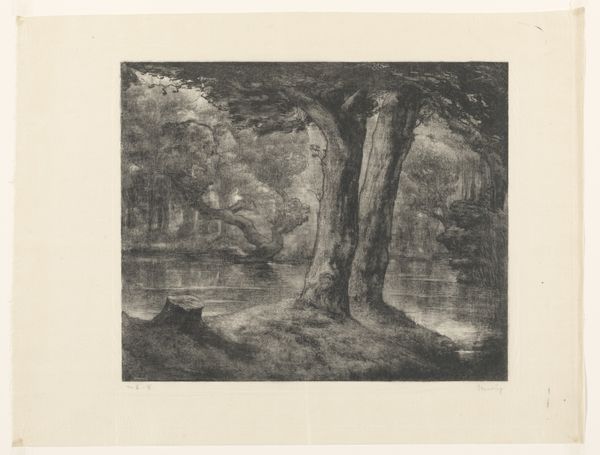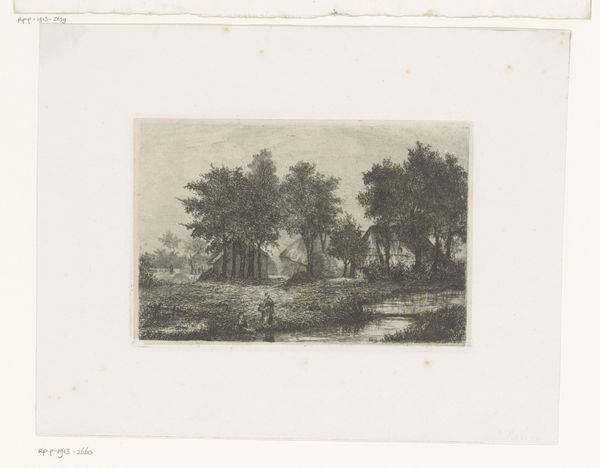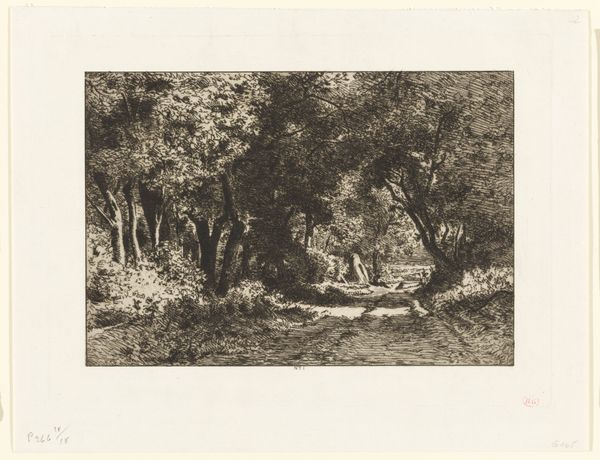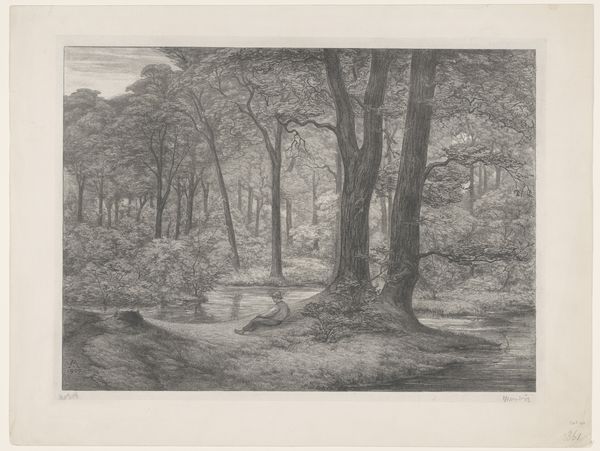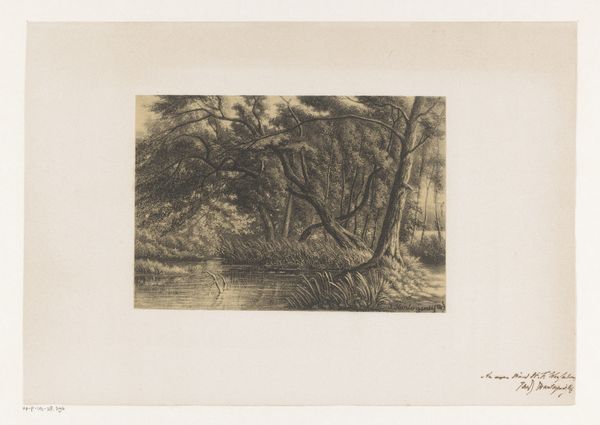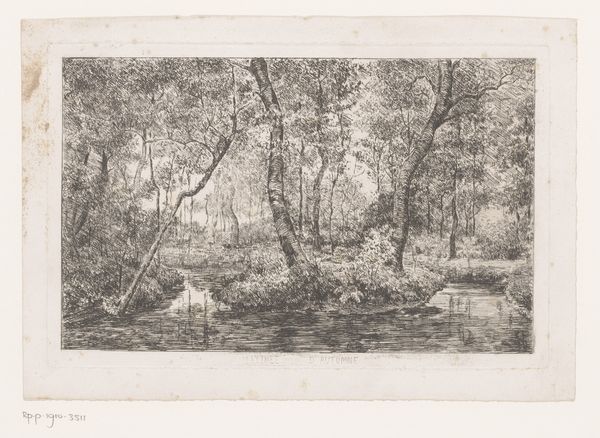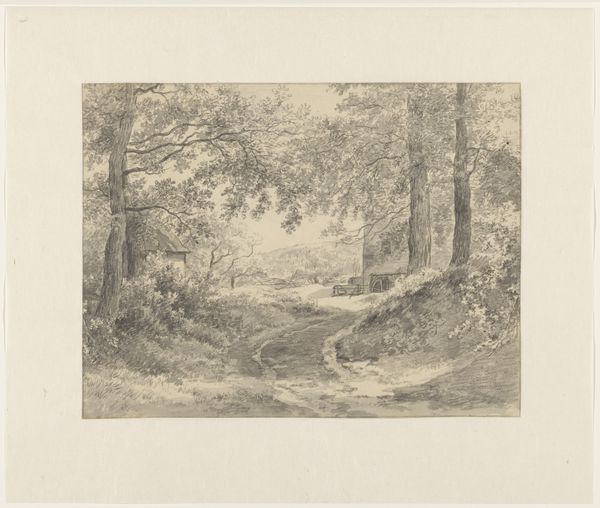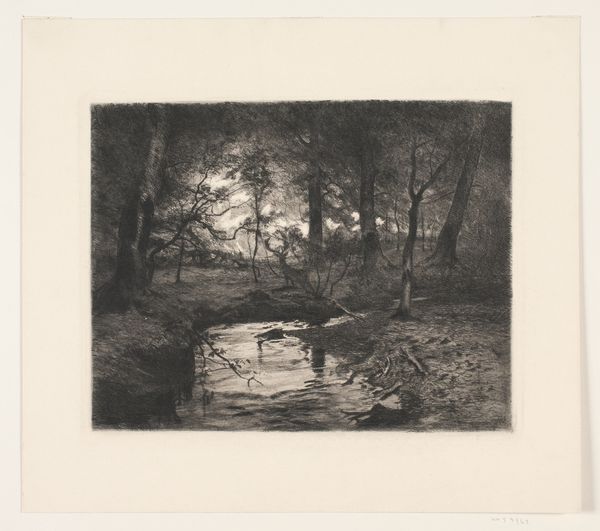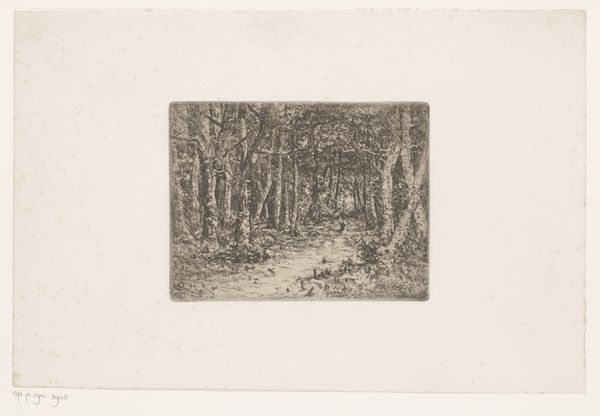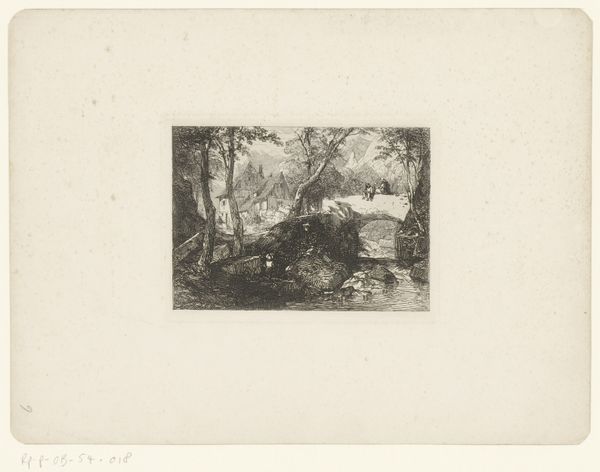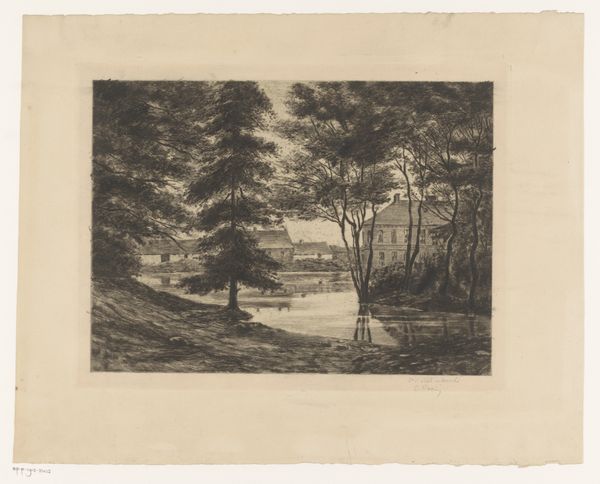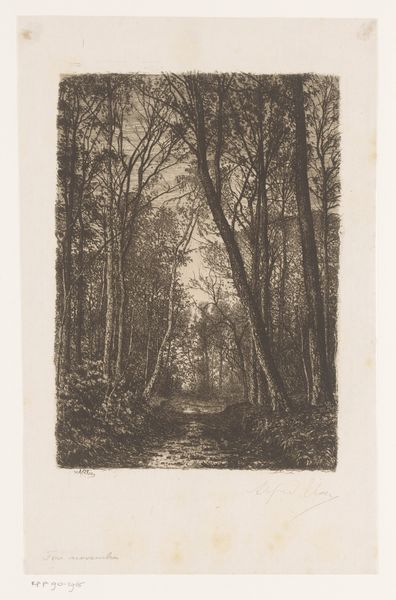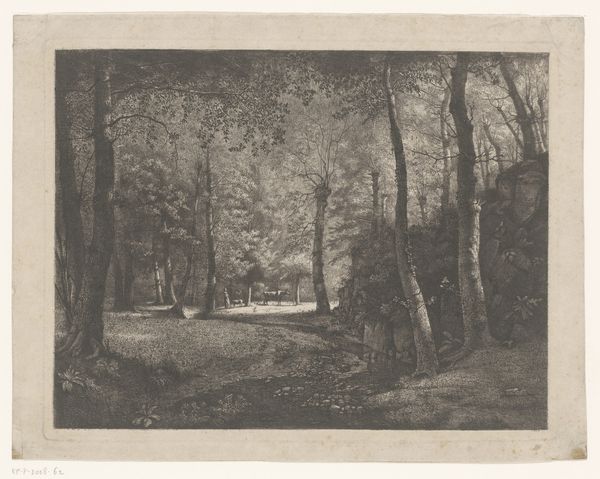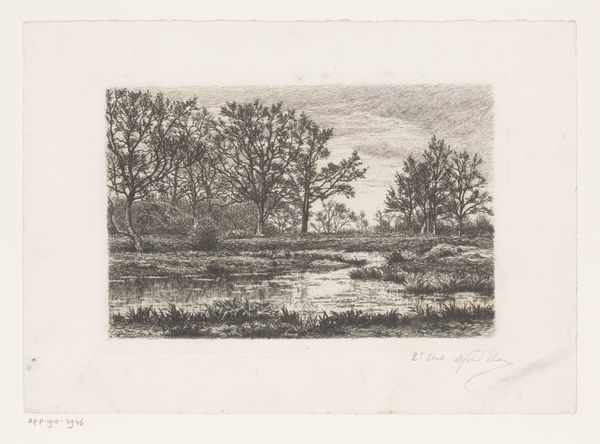
print, etching
# print
#
etching
#
landscape
#
realism
Dimensions: height 161 mm, width 250 mm
Copyright: Rijks Museum: Open Domain
Curator: Let's delve into "Boslandschap met beek," or "Wooded Landscape with Stream," an etching attributed to Jules Guiette, likely created between 1862 and 1901. Editor: It's moody, almost oppressive. The dark etching really emphasizes the density of the forest. You can almost feel the dampness and cool air radiating from the image. Curator: Certainly. The work participates in a broader 19th-century artistic trend where realistic landscape depictions were not just about representing nature but were deeply tied to ideas of national identity and Romantic ideals. Think of the Barbizon School, for instance. Artists like Guiette captured intimate, local scenes, moving away from grand historical painting. Editor: Which is evident in the choice of etching as a medium. The process involves painstakingly drawing an image on a metal plate coated with wax, then using acid to etch the lines. It's laborious, emphasizing the artist's hand and skill, really foregrounding materiality, making it widely available, relatively, for dissemination. Curator: Absolutely. Prints like this brought art into homes and stimulated a wider appreciation for landscapes. Consider the growth of public art galleries and museums around this time too—it all fostered a sense of cultural value for this genre. Editor: I'm fascinated by the depiction of light, or lack thereof. It is mostly tonal variation created by all those little etched lines, layering shadows on shadows. I am intrigued by what the experience of that labor was. To try and recreate that sense of place with nothing more than lines... Curator: The scene evokes a specific mood of pensive isolation. Guiette taps into a cultural fascination with the natural world and provides his contemporaries with a scene removed from industrial society. The etching became both a celebration of landscape and a cultural commodity. Editor: I come back to the mark-making here. To see all the labor required for the printing. It is about what that process enables as much as the final composition. The act of etching itself imprints a tactile experience, it is very hands-on. Curator: Very well said, it reflects a society discovering and defining its relationship with its surrounding environment. Thank you. Editor: It is a landscape reduced to its essential lines. It leaves me appreciating not just the skill, but also the means to access it.
Comments
No comments
Be the first to comment and join the conversation on the ultimate creative platform.
